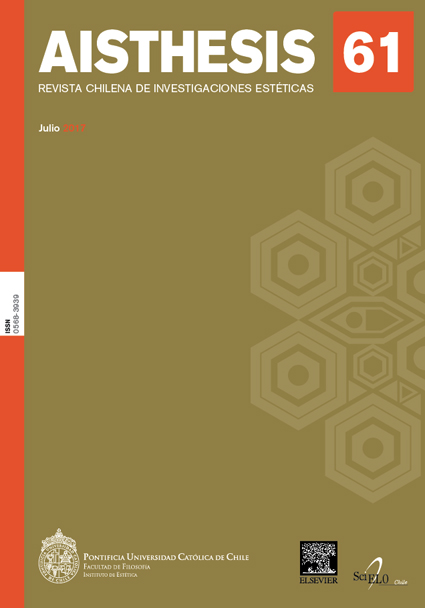The Avid Eye: Two Broken Realisms in Jean Renoir’s Naná
Main Article Content
Abstract
This article analyzes the way in which Jean Renoir, in his film Naná −an adaptation of Émile Zola’s novel− shows the impossibility of an “objective point of view” for its characters. It is argued that Renoir shows this impossibility through narrative techniques that question, at the same time, the possibilities of “realism” in cinema. The article explains the existence of “two realisms” −narrative and descriptive− as constitutive of the filmic text, that are used paradoxically by Renoir to deny objectivity in his characters’ point of view.
Downloads
Article Details

This work is licensed under a Creative Commons Attribution-NonCommercial-ShareAlike 4.0 International License.
All contents of this electronic edition are distributed under the Creative Commons license of "Attribución-shareAlike 4.0 Internacional" (CC-BY-SA). Any total or partial reproduction of the material must mention its origin.
The rights of academic works published in this publication belong to their authors., who grant to AISTHESIS: Revista Chilena de Investigaciones Estéticas the license for its use. The management of the permits and the authorization of the publication of the images (or of any material) that contains copyright and its consequent rights of reproduction in this publication is the sole responsibility of the authors of the articles
